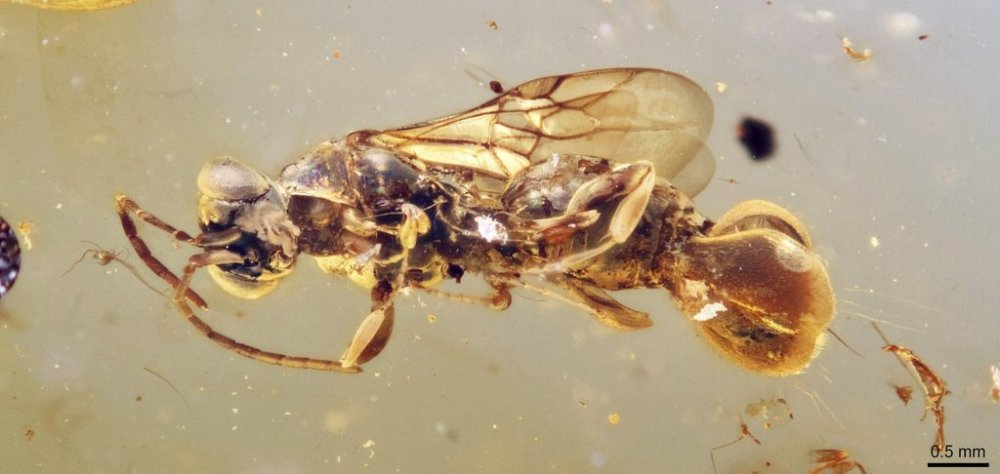A Venus flytrap wasp? Scientists uncover an ancient insect preserved in amber that snatched its prey
Advertisement
Read this article for free:
or
Already have an account? Log in here »
To continue reading, please subscribe:
Monthly Digital Subscription
$0 for the first 4 weeks*
- Enjoy unlimited reading on winnipegfreepress.com
- Read the E-Edition, our digital replica newspaper
- Access News Break, our award-winning app
- Play interactive puzzles
*No charge for 4 weeks then price increases to the regular rate of $19.00 plus GST every four weeks. Offer available to new and qualified returning subscribers only. Cancel any time.
Monthly Digital Subscription
$4.75/week*
- Enjoy unlimited reading on winnipegfreepress.com
- Read the E-Edition, our digital replica newspaper
- Access News Break, our award-winning app
- Play interactive puzzles
*Billed as $19 plus GST every four weeks. Cancel any time.
To continue reading, please subscribe:
Add Free Press access to your Brandon Sun subscription for only an additional
$1 for the first 4 weeks*
*Your next subscription payment will increase by $1.00 and you will be charged $16.99 plus GST for four weeks. After four weeks, your payment will increase to $23.99 plus GST every four weeks.
Read unlimited articles for free today:
or
Already have an account? Log in here »
Hey there, time traveller!
This article was published 26/03/2025 (227 days ago), so information in it may no longer be current.
NEW YORK (AP) — An ancient wasp may have zipped among the dinosaurs, with a body like a Venus flytrap to seize and snatch its prey, scientists reported Wednesday.
The parasitic wasp’s abdomen boasts a set of flappy paddles lined with thin bristles, resembling “a small bear trap attached to the end of it,” said study co-author Lars Vilhelmsen from the Natural History Museum of Denmark.
Scientists uncovered over a dozen female wasps preserved in 99-million-year-old amber from the Kachin region in northern Myanmar. The wasp’s flaps and teeth-like hairs resemble the structure of the carnivorous Venus flytrap plant, which snaps shut to digest unsuspecting insects. But the design of the wasp’s getup made scientists think its trap was designed to cushion, not crush.

Instead, researchers suggested the flytrap-like structure was used to hold a wriggly insect still while the wasp laid an egg, depositing a baby wasp to feed on and drain its new host.
It’s a playbook adapted by many parasitic wasps, including modern-day cuckoo and bethylid wasps, to exploit insects. But no known wasp or any other insect does so with bizarre flaps quite like this one.
“I’ve seen a lot of strange insects, but this has to be one of the most peculiar-looking ones I’ve seen in a while,” said entomologist Lynn Kimsey from the University of California, Davis, who was not involved with the research.
Scientists named the new wasp Sirenobethylus charybdis, partly for the sea monster from Greek mythology that stirred up wild whirlpools by swallowing and expelling water.
The new study was published in the journal BMC Biology and included researchers from Capital Normal University and the Beijing Xiachong Amber Museum in China.
It’s unclear when the wasp went extinct. Studying unusual insects like this one can help scientists understand what insects are capable of and how different they can be.
“We tend to think that the cool things are only found today,” said Gabriel Melo, a wasp expert at the Federal University of Paraná in Brazil, who had no role in the study. “But when we have this opportunity, we see that many really exceptional, odd things already happened.”
___
The Associated Press Health and Science Department receives support from the Howard Hughes Medical Institute’s Science and Educational Media Group and the Robert Wood Johnson Foundation. The AP is solely responsible for all content.

